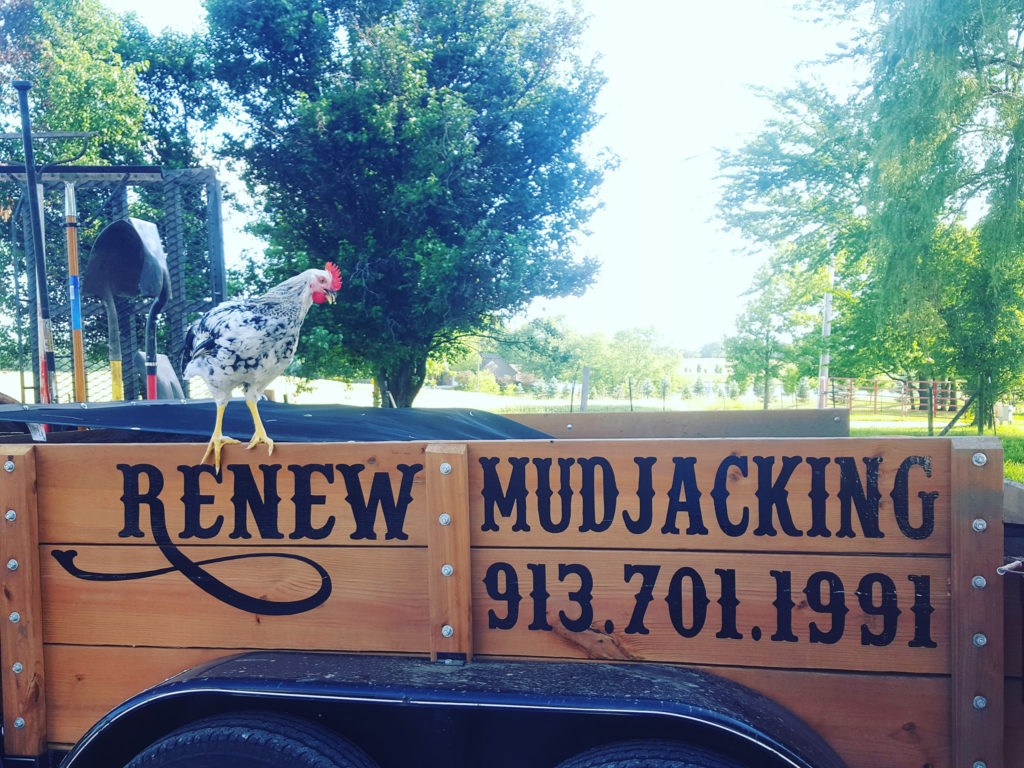
Our Services
We offer Mudjacking and Polyjacking, we serve both commercial and residential clients by using a premium topsoil and mortar mixture and our premium option is a NCFI two part polyurethane system.
Why do I need mudjacking/polyjacking?
When your concrete was first poured, the ground had been disturbed by multiple contractors pouring a foundation, running utilities, water lines etc. These disturbances caused the sub grade to become less stable. Over time the sub grade starts to settle into place, wash out, and/or starts to compact under the weight of the concrete. This will cause the concrete to settle, become unlevel, crack, or just have a void.
Who we serve
We provide mudjacking and polyjacking services to anyone in Johnson County, KS and surrounding areas (only on the Kansas side). This includes residential homeowners, commercial, or municipalities. From sidewalks, driveways, porches, steps, stoops, patios, pool decks, garage floors, or any other flatwork, our certified technicians can help provide simple, cost effective solutions.
Common Questions
How the process works.
After contacting us, Lydia will come out to give you a bid. She takes all the photos and measurements. She will also drill test holes (that are the size of a dime and refill them) to determine how much material will be needed to complete your job thoroughly. Then an estimate will be put together and emailed to you within a few business days.
Once you have accepted the estimate, we will arrange a time to come out that works best with your schedule. Kevin, our crew leader, and team will come out and help lift, level and fill any voids. Once we are done, we wash all surface areas and seal the holes with a non shrinking concrete material.
Polyjacking
Mudjacking
How soon can we drive or walk on the concrete?
The same day! We just ask you be mindful of the holes we drill and make sure they are dry before stepping on them. Let the material set up for 1-3 days given the weather conditions, before parking or setting large items back on the surface.
Why does concrete sink?
Sinking driveways, patios, porches, stoops, pool decks, garage floors, or any other flatwork slab:
There can be many factors:
Many homeowners in Johnson County and surrounding areas have to deal with settling concrete. Even under the best of circumstances, with the best materials and building practices, virtually every concrete slab is subject to some amount of natural settling over time. Most homes are built so quick that natural or mechanical compaction doesn’t happen. If there isn’t enough soil beneath the slab or there is a high clay content (very common in Kansas), there is a higher chance of having your slab crack and sink. Below are the most common causes:
Poorly compacted soil
This usually starts before the concrete is poured. Generally, homes are built so quickly that there is no time for natural compaction. Secondly, the contractors installing the concrete don’t usually take the time to properly, mechanically, compact the soil. This leads to cracking and sinking.
Washout
Improper drainage can cause a lot of issues on the subgrade as well. Having a downspout dumping right at the edge of the concrete causes washout and degradation of the subgrade, leading to cracking and sinking.
Moisture content of soil
The moisture content in the soil also plays a role in settling concrete. Clay soils have a shrink and swell factor. Over time the shrinking and swelling causes the natural compaction of the soil, leading to voids, cracks, and sinking concrete. This is especially noticeable during droughts, as all the moisture has been removed and the soil itself noticeably shrinks and cracks.
Is maintenance needed?
Once we have completed mudjacking or polyjacking, it’s the homeowners responsibility to caulk any seams or cracks this weren’t completed with the provided work and/or backfill any exposed areas to contain the material and prevent future erosion. We are happy to offer crack repairs!
Preventing water from getting under the slabs is key to preserving the RENEWed concrete. We also recommend properly burying any downspout to ensure drainage is directed away from concrete and foundation.
The Process
STEP 1: Evenly space out and drill 1 3/4 inch holes through the sunken concrete.
STEP 2: Carefully inject premium topsoil and mortar mixture to slowly lift and level or fill void.
STEP 3: Wash surfaces and fill with a non-shrinking concrete material.
STEP 4: Enjoy your RENEWed concrete for a fraction of the price of replacement!
